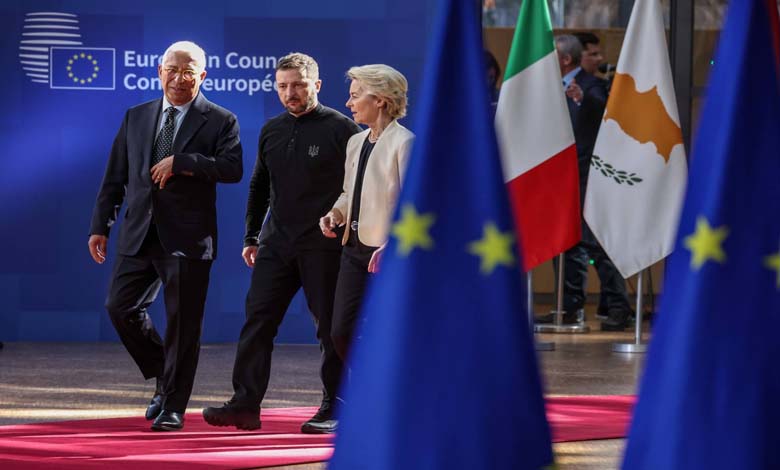Europe’s Re-arming Plans: Realistic Ambition or Self-Deception?

The European Union‘s efforts to rebuild its defense capabilities are facing increasing skepticism, as the necessary funding for this mission remains shrouded in ambiguity.
According to “Responsible Statecraft,” the EU’s attempts to reduce its reliance on the United States face significant challenges in financing its rearmament plans, which are estimated to cost around $876 billion.
Despite innovative ideas like creating a rearmament bank, doubts persist about the feasibility of these plans amidst fragile economic conditions and high public debts.
-
Top diplomat: The European Union is preparing sanctions against Turkey
-
European Broadcasting Union condemns Qatar’s stance and demands respect for journalists
The €800 Billion Plan
The European Commission recently unveiled a plan worth €800 billion ($876 billion) for rearming the forces.
The plan essentially involves imposing a massive increase in defense spending on each member state, with approximately €650 billion ($712 billion) of these funds coming from each of the 27 member countries, increasing defense spending by 1.5 percent of GDP above current levels.
However, the major obstacle lies in implementing this increase, especially with the rising debt levels in major countries like France (113 percent of GDP) and Italy (136 percent of GDP), which raises the annual cost of the plan to $47 billion for France and $34.7 billion for Italy.
-
Why Is It Time to Reconsider the Creation of a European Army?
-
European countries pledge to enforce ICC warrants against Netanyahu
The Rearmament Bank: A Fictitious Solution to the Funding Crisis?
Countries like Poland have sought to introduce the idea of a “rearmament bank” to attract private investments to support the defense industries.
While the idea appears attractive, especially given Europe’s current military spending of nearly $113 billion annually, concerns are growing about shifting the cost burdens onto the private sector without guarantees of achieving efficiency or additional capabilities.
-
After America: Is it Time to Transform NATO into a European Organization?
-
Analysts reveal the danger of Muslim Brotherhood expansion in European Societies
The Nuclear Nightmare and Erosion of Human Resources
Nuclear programs top the list of financial challenges, with budget overruns of 62 percent, such as the joint nuclear submarine program with the United States, “AUKUS.”
In contrast, resources allocated to human resources are shrinking; the UK has seen a 10 percent reduction in real military spending since 2010, with a $3.2 billion cut to the military personnel budget for 2024, threatening troop morale and complicating recruitment efforts.
-
Cold War on the Horizon… Russia: European Capitals are Targets if Missiles are Deployed in Germany
-
The curse of the Muslim Brotherhood haunts European parties that supported them
The Military Density Problem
Despite the massive plans, European armies still suffer from low military density compared to both Russia and Ukraine. Experts are skeptical about the proposed increases in spending, which focus on technology and equipment, being able to bridge the gap in human numbers, especially with governments resistant to increasing spending amid a potential economic recession.
European initiatives also face deep skepticism regarding their ability to achieve a genuine defense transformation. The European $150 billion defense loan plan for Ukraine differs fundamentally from the British-Polish investment bank idea, complicating the coordination process.
Observers note that the current plans may only amount to “circulating fictitious funds” in the absence of a unified strategic vision and rising economic pressures, potentially reproducing past crises without radical solutions.












